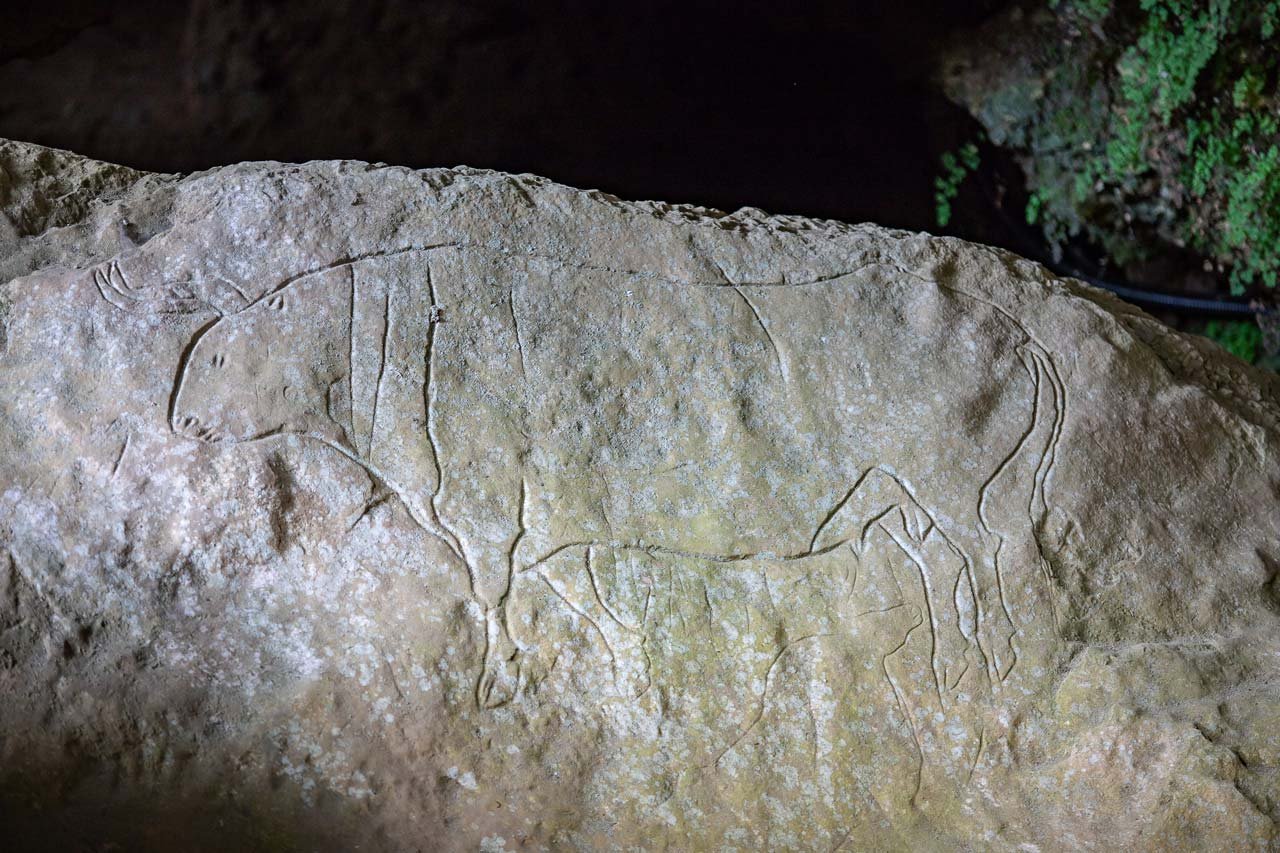A Palaeolithic jewel and a very important site for its ancient cultural and artistic findings dating back to prehistoric times, the Grotta del Romito is one of Calabria's landmarks.
Lovers of art, history and ancient civilisations will not fail to visit it to admire unique Italian and European testimonies.
We are in Papasidero (CS), near the valley of the Lao river, in a narrow cavity that more than 10,000 years ago was chosen by man as a place of shelter and religious or symbolic rites.
Today, works of rock art, finds of working tools and burials of various kinds take us back in time, to the discovery of a bygone era, where man and nature lived in an atmosphere of continuous fusion.
A unique testimony
The site can be subdivided into two environments: an outer one and the other located within the narrow canyon of the rock face. Its uniqueness is due to the discovery of artefacts that have allowed the reconstruction of important details on the habits that characterised the life of Homo Sapiens. The discovery took place in 1961 and since then, studies and excavation work have continued, bringing to light information and evidence rich in interest and fascination.
The Bos primigenius engraving and burials
The importance of the Papasidero Cave is linked to a particular work of rock art on a large boulder located near the entrance and still clearly visible today: the beautiful engraving of Bos primigenius, i.e. a primitive bovid with another smaller bovid beside it. This animal, along with many others, must have been prey hunted by the men of the time, as bone finds inside the cave have shown. Most probably the engraving is part of propitiatory rites and ceremonies in favour of hunting activities.
The drawing is executed with a firm, decisive stroke and with great accuracy (the horns clearly visible, the details of the skin), which makes it aesthetically appreciable and immediately recognisable.
In the interior, two groups of burials were found, which probably belong to different eras and are dated between 12,000 and 10,000 years ago.
The first, older group contains single burials of people with a strong constitution. The second group, from a later period, consists of double (bisome) burials, dedicated to weaker or physically handicapped individuals.
In addition to these findings, the remains of lithic or mining tools and ornamental artefacts were also discovered.

